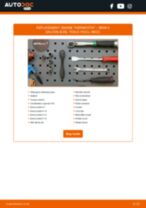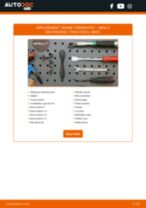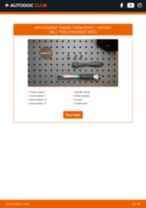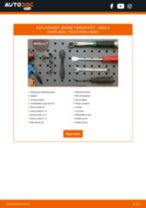Changing Thermostat yourself – manuals and video tutorials
Changing Thermostat: step-by-step guides
Most viewed video tutorials on the installation of Thermostat
 How to change engine thermostat on PEUGEOT 207 [TUTORIAL AUTODOC]
How to change engine thermostat on PEUGEOT 207 [TUTORIAL AUTODOC] Thermostat replacement on a VW PASSAT B7 saloon – problem-solving [TUTORIAL AUTODOC]
Thermostat replacement on a VW PASSAT B7 saloon – problem-solving [TUTORIAL AUTODOC] How to change a Thermostat on OPEL VECTRA C TUTORIAL | AUTODOC
How to change a Thermostat on OPEL VECTRA C TUTORIAL | AUTODOC How to change engine thermostat on VW GOLF 4 [TUTORIAL AUTODOC]
How to change engine thermostat on VW GOLF 4 [TUTORIAL AUTODOC] How to change engine thermostat on VW GOLF 2 [TUTORIAL AUTODOC]
How to change engine thermostat on VW GOLF 2 [TUTORIAL AUTODOC] How to change engine thermostat on BMW E36 [TUTORIAL AUTODOC]
How to change engine thermostat on BMW E36 [TUTORIAL AUTODOC] How to change engine thermostat on AUDI A4 B5 Saloon [TUTORIAL AUTODOC]
How to change engine thermostat on AUDI A4 B5 Saloon [TUTORIAL AUTODOC] How to change engine thermostat on OPEL MERIVA A [TUTORIAL AUTODOC]
How to change engine thermostat on OPEL MERIVA A [TUTORIAL AUTODOC] How to change engine thermostat on BMW E39 Touring [TUTORIAL AUTODOC]
How to change engine thermostat on BMW E39 Touring [TUTORIAL AUTODOC] How to change temperature sensor and engine thermostat on MERCEDES W124 [TUTORIAL AUTODOC]
How to change temperature sensor and engine thermostat on MERCEDES W124 [TUTORIAL AUTODOC] How to change engine thermostat on FORD MONDEO MK3 Saloon [TUTORIAL AUTODOC]
How to change engine thermostat on FORD MONDEO MK3 Saloon [TUTORIAL AUTODOC] How to change the engine thermostat on the FORD TRANSIT MK7 [AUTODOC TUTORIAL]
How to change the engine thermostat on the FORD TRANSIT MK7 [AUTODOC TUTORIAL]![How to change engine thermostat on OPEL CORSA S93 [TUTORIAL AUTODOC]](https://i.ytimg.com/vi/HejVdCOCUys/mqdefault.jpg) How to change engine thermostat on OPEL CORSA S93 [TUTORIAL AUTODOC]
How to change engine thermostat on OPEL CORSA S93 [TUTORIAL AUTODOC]![How to change engine thermostat on BMW E46 Touring [TUTORIAL AUTODOC]](https://i.ytimg.com/vi/-Z_Mijf7Qt4/mqdefault.jpg) How to change engine thermostat on BMW E46 Touring [TUTORIAL AUTODOC]
How to change engine thermostat on BMW E46 Touring [TUTORIAL AUTODOC]![How to change engine thermostat on ALFA ROMEO 147 (937) [TUTORIAL AUTODOC]](https://i.ytimg.com/vi/8e59jU83U4c/mqdefault.jpg) How to change engine thermostat on ALFA ROMEO 147 (937) [TUTORIAL AUTODOC]
How to change engine thermostat on ALFA ROMEO 147 (937) [TUTORIAL AUTODOC]![How to change engine radiator and thermostat on MERCEDES W201 [TUTORIAL AUTODOC]](https://i.ytimg.com/vi/tDys1ILfUR8/mqdefault.jpg) How to change engine radiator and thermostat on MERCEDES W201 [TUTORIAL AUTODOC]
How to change engine radiator and thermostat on MERCEDES W201 [TUTORIAL AUTODOC]
Replacing Thermostat: TOP manuals for changing
Video instructions for changing the Thermostat – playlist by AUTODOC CLUB
 How to change thermostat tutorial | Step-by-step video guide
How to change thermostat tutorial | Step-by-step video guide
Advices on car maintenance
 6 SIGNS OF A BAD FUEL FILTER | AUTODOC tips
6 SIGNS OF A BAD FUEL FILTER | AUTODOC tips Noise from under the hood | AUTODOC TIPS
Noise from under the hood | AUTODOC TIPS Symptoms and causes of engine misfiring | How to prevent engine misfire | AUTODOC tips
Symptoms and causes of engine misfiring | How to prevent engine misfire | AUTODOC tips Everything you need to know about the oil filter | AUTODOC tips
Everything you need to know about the oil filter | AUTODOC tips
Unlock your car maintenance assistant!
Track expenses, manage logs, schedule replacements, and more.
How to change Thermostat on your car yourself
Frequently asked questions about thermostat replacement
Other car repair tutorials

Time to replace parts? Get even better deals in our Shop app.

SCAN ME















 Play all playlists
Play all playlists






















































